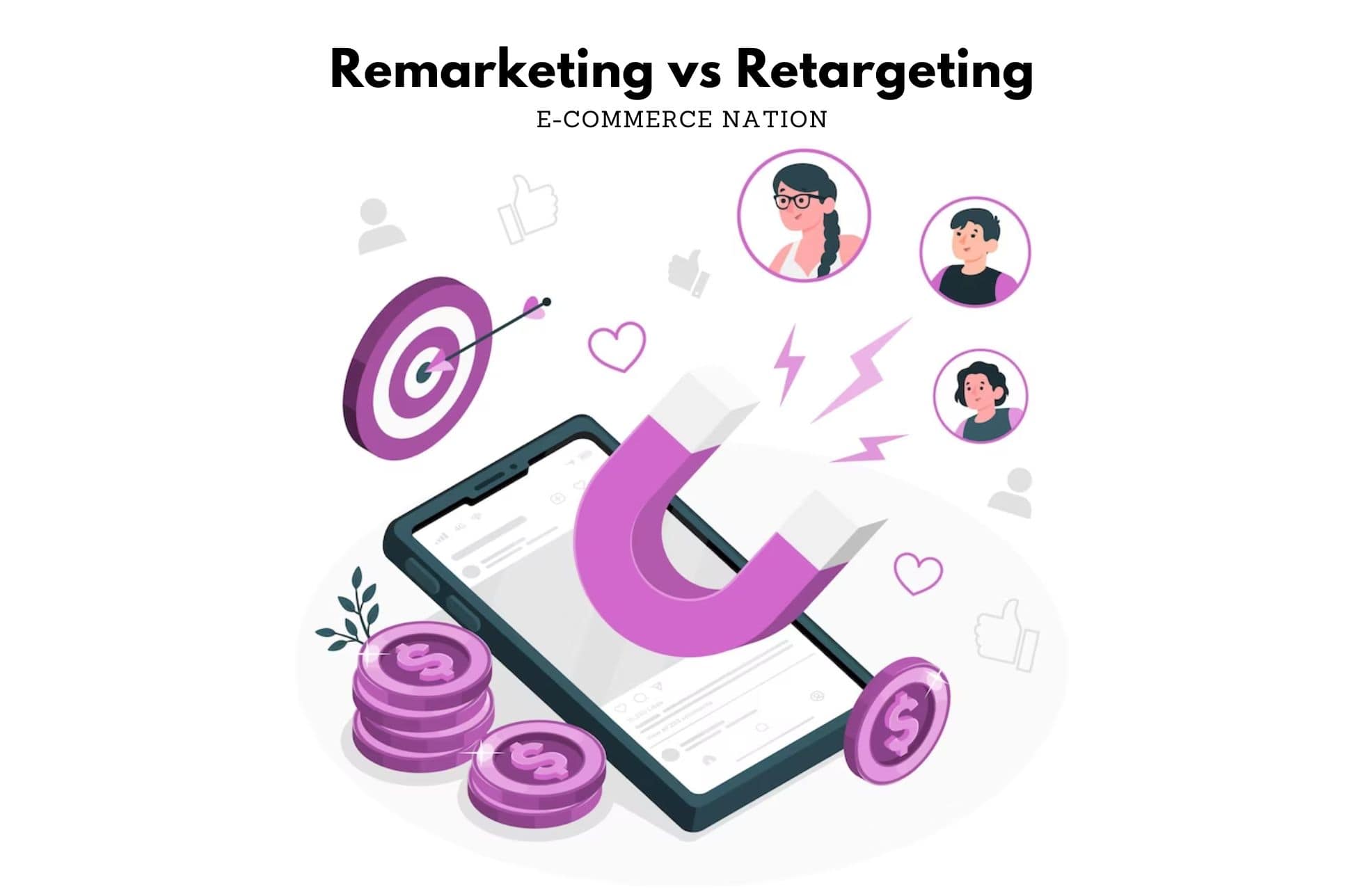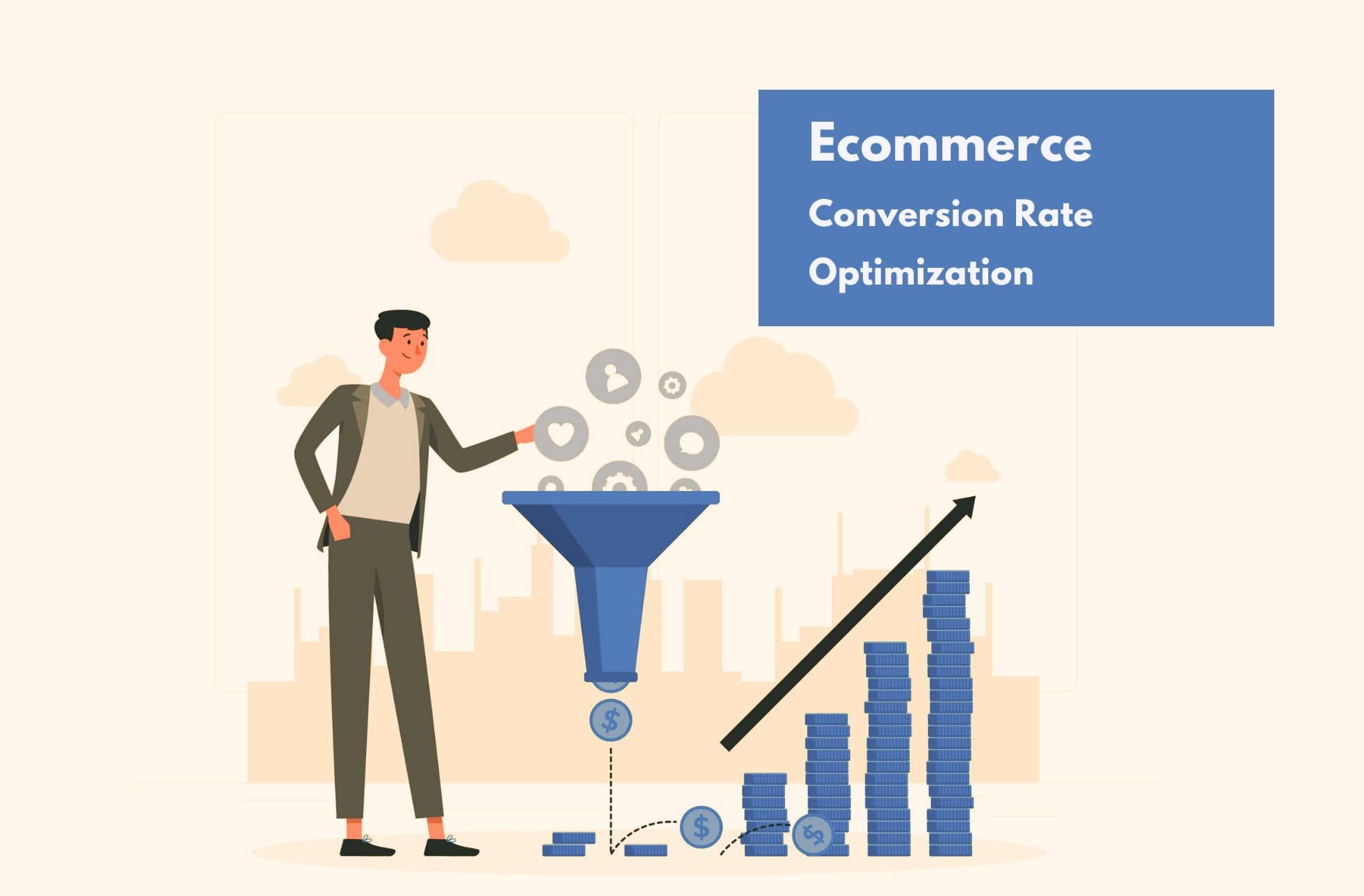Have you ever noticed that when you need something, like a pair of shoes, whether you’re browsing the internet, scrolling through Instagram you start seeing advertisements for shoes? Or when you don’t complete your purchase you keep receiving tempting offers? you wonder why? The reason that companies use remarketing and retargeting techniques.
The terms remarketing and retargeting are two concepts that have emerged and become popular as a result of technological developments. There are logical reasons for this popularity among most businesses across the world.
As an online business owner, you’re well aware of the challenges of converting visitors into customers. You’ve invested time and resources into building a website, creating valuable content, and driving traffic to your site. But even with all of this effort, a significant percentage of your visitors will leave without taking any action.
Fortunately, the Internet and E-commerce technologies provide opportunities for businesses to implement efficient and cost-effective strategies for their marketing activities like Remarketing and Retargeting.
In this article, you can understand these two strategies and learn how to implement them and you will see some guidelines for best practices in this subject.
Definition of Remarketing and Retargeting
Before going into the details of the technical differences between these concepts, in E-commerce Nation, we define remarketing and retargeting as “reconnecting with audiences who have already shown interest in your products or services, or those who already have interacted with your business”. The main goal of this connection is to reengage with your high-potential customers and prospects.
However, the presented definition is a combination of both concepts. Understanding the difference between these two can help your marketing team to plan a more effective marketing strategy.
Remarketing vs Retargeting
In most resources remarketing definition is somehow connected to retargeting. Even more, many resources identified these two concepts as identical and use them interchangeably. So why bother and compare Remarketing vs Retargeting? Because, there are some major differences between these two in terms of targeted audience and tools. Understanding these distinctions can help marketers to create better marketing strategies and plans.
What is Remarketing?
Aims to re-engage with customers based on their previous purchase transactions. This strategy is an important part of customer relationship management. Email is the major medium that is used by marketing experts for remarketing activities. For example, when you send an exclusive promotional offer or discount to your customers who did not purchase anything from you in the last 3 months, you are using this strategy to reengage your inactive customers.

What is Retargeting?
When it comes to engaging with potential customers online, ecommerce retargeting is a vital strategy that no business can afford to ignore. retargeting is a way to interact with potential customers online and is considered one of the most important strategies of digital advertising.
Using a technological infrastructure, it’s an efficient way to make the most out of your advertising budget. Retargeter states that the conversion rate during the first visit is only 2%, and businesses need to employ ecommerce retargeting strategies to reach the remaining 98% of traffic.
Note that retargeting, in contrast with remarketing, aims to bring new customers by targeting high-potential customers. Ads (like CPC banners or Instagram ads) are the principal medium for implementing ecommerce retargeting. For example when you decide to show your instant coffee product to those who searched for “quitting coffee” or “coffee machine”, or when you show your sneakers to a visitor who already visited your products page while he is reading an article in some other website, you are using Retargeting technique.

Both marketing strategies are used to deliver more personalized messages to the target audience and achieve a higher conversion rate. By combining both strategies, businesses can create a comprehensive approach to nurturing leads and driving conversions.
There you go. the mystery of “remarketing vs retargeting” has been solved!
You can learn more about personalization in marketing by reading the “How to Create an Accurate Buyer Persona and Revolutionize your marketing” article. Creating a persona is one of the first steps in providing personalized services.
Remarketing and Retargeting benefits
These strategies offer numerous benefits to businesses in various aspects. They can affect your brand, customer relationships, revenues, and costs. Here are some of their benefits:
Increase Brand Awareness

These techniques allow businesses to stay top-of-mind with potential customers. By re-engaging with customers who have already shown interest in your products or services, businesses can remind them of their brand and build brand awareness.
Decreased costs

They are both, cost-effective strategies compared to other marketing methods. By focusing on re-engaging with existing customers, or high-potential visitors, businesses can avoid spending resources on targeting cold audiences and increase the return on their advertising investment.
Reactive inactive users

Remarketing can help reactivate inactive customers by sending them personalized offers and promotions to encourage them to make a purchase. This strategy can help businesses bring back customers who may have forgotten about their brand or lost interest.
Decrease Cart Abandonment

Retargeting can help decrease cart abandonment rates by reminding potential customers of items they left in their shopping cart. By showing ads or sending emails featuring the products left behind, businesses can entice customers to return to their site and complete the purchase.
Cross Selling Opportunities

Remarketing allows businesses to promote related or complementary products to existing customers, increasing the potential for cross-selling opportunities. By showing ads for related products, businesses can encourage customers to make additional purchases.
You can read more about cross-selling in the “What is cross selling and how to use it to increase your sale” article.
Increased Sales

Both strategies can increase sales by targeting high-potential customers who have already shown interest in a product or service. By delivering personalized and relevant ads to these customers, businesses can increase the chances of converting them into paying customers.
Improved Customer Relationship Quality

By implementing these strategies, businesses can improve their customer relationship quality by showing their customers that they value them. By sending personalized offers and promotions, businesses can build stronger relationships with their customers and encourage them to become loyal brand advocates.
Remarketing best practices
For both, there are some guidelines that you need to follow to have a successful marketing campaign.
Define your target audience
Before starting any campaign, it is important to define your target audience. You should have a clear understanding of who your ideal customer is, what they are interested in, and how they interact with your brand. Try to be clear about which segments are you exactly targeting.
Create customized messaging
Personalization is key in remarketing. You need to create customized messaging that speaks directly to your target audience. Use dynamic ads to tailor your message based on the user’s previous interaction with your website, or customized emails that look personal. You need to understand your target before providing valuable offers to them.
Set frequency caps
It is important to set frequency caps to ensure that your ads are not overexposed to the same user. This can lead to ad fatigue and a negative user experience.
Use different ad formats: Experiment with different ad formats such as static images, videos, and carousels. This can help keep your ads fresh and engaging.
Test and optimize
Continuously test and optimize your remarketing campaigns to improve their performance. Analyze your data to identify what’s working and what’s not, and make adjustments accordingly.
Measuring and controlling your remarketing campaigns is a good start, but you can take it to the next level by using a business intelligence system in which you can control other aspects of your business. We strongly recommend you read the “Uncover the Business Intelligence Implementation” article.
Using Native Advertising to Enhance Remarketing Success
Native advertising can be a powerful tool to boost the effectiveness of remarketing campaigns. Native ads are designed to seamlessly blend in with the surrounding content, providing a non-disruptive and engaging user experience. Incorporating native advertising into your remarketing strategy can help increase user engagement and conversion rates.
Read more in the “Unleash the power of your marketing with Native Advertising” article.
Top 5 remarketing tools
Digital marketers can conveniently deliver compelling offers and advertisements to audiences that have previously engaged with their brands online, thanks to retargeting platforms.
Google Ads
is a powerful remarketing tool that enables businesses to create ads that target visitors who have previously interacted with their website or app. Google Ads offers various strategies, including standard remarketing, dynamic remarketing, and remarketing lists for search ads. With Google Ads, businesses can easily track the performance of their ads and adjust their campaigns accordingly to improve conversions.
Is another popular platform for remarketing. With Facebook’s remarketing tool, businesses can retarget audiences who have interacted with their Facebook page, website, or app. Facebook offers various options, including custom audiences, lookalike audiences, and dynamic ads. These options allow businesses to create personalized ad campaigns that drive conversions.
Mailchimp
is a popular email marketing platform that also offers remarketing capabilities. With Mailchimp, businesses can send targeted email campaigns to subscribers who have previously interacted with their website or app. Mailchimp offers a range of remarketing features, including automation workflows, segmentation, and A/B testing. These tools enable businesses to create engaging email campaigns that drive conversions.
Criteo
Criteo is a digital advertising platform that specializes in remarketing. With Criteo, businesses can target audiences who have previously interacted with their website or app using personalized ads. Criteo’s proprietary algorithm uses machine learning to optimize ad delivery, ensuring that businesses reach the right audience at the right time.
Hubspot
Hubspot is a popular inbound marketing and sales platform that also offers remarketing capabilities. With Hubspot, businesses can create personalized campaigns that target audiences who have previously interacted with their website or app. Hubspot’s remarketing tools enable businesses to create engaging content and personalized campaigns that drive conversions.
You can read more about Hubspot and learn some magnificent tricks for using it in the “11 tricks to get the most out of HubSpot for your E-Commerce” article.
Key Insights
By utilizing these two techniques, enterprises can form enduring connections with their current customers, recapture lost customers, and initiate communication endeavors with the intended audience who may have displayed an interest in the company and its offerings but have not yet made a purchase. Here are some of the major key insights of this article:
- Remarketing and retargeting are two strategies that can help online businesses to increase advertisement effectiveness.
- Remarketing aims to re-engage with customers based on their previous purchase transactions while retargeting targets potential customers who have shown interest in a product or service.
- Both strategies are cost-effective and can help increase brand awareness, decrease cart abandonment, increase sales, and improve customer relationship quality.
- Remarketing allows businesses to promote related or complementary products to existing customers, increasing the potential for cross-selling opportunities.
- By combining both strategies, businesses can create a comprehensive approach to nurturing leads and driving conversions.
Frequently Asked questions about Remarketing and Retargeting
Is it remarketing or retargeting?
Both terms, remarketing and retargeting, are commonly used in the field of online marketing, and they are often used interchangeably. However, there are some distinctions between the two. Remarketing typically refers to reconnecting with customers based on their previous purchase transactions, focusing on re-engaging with existing customers. Retargeting, on the other hand, is primarily aimed at targeting potential customers who have shown interest in a product or service but haven’t made a purchase yet. It focuses on acquiring new customers by delivering personalized ads. So, while they are related concepts, the main difference lies in the target audience and the goals of the strategies.
What is a synonym for remarketing?
A synonym for remarketing is “re-engagement.” It involves reconnecting with customers who have previously shown interest in your products or services or have interacted with your business. The goal is to re-engage with these individuals and encourage them to make a purchase or take a desired action. Synonyms like “reconnecting” or “re-targeting” can also be used to describe this marketing approach.
What is a remarketing plan?
A remarketing plan is a strategic approach to reconnecting with customers who have previously interacted with your business. It involves creating a comprehensive strategy to engage and re-engage with these customers through personalized messaging, targeted ads, and relevant offers. A remarketing plan outlines the specific tactics, platforms, and tools to be used in order to maximize the effectiveness of the remarketing efforts. It includes defining the target audience, designing customized messages, setting frequency caps, selecting appropriate ad formats, and continuously testing and optimizing the campaigns for better results.
What is Amazon remarketing?
Amazon remarketing refers to the remarketing or retargeting strategies employed by sellers on the Amazon platform. It involves reconnecting with customers who have shown interest in a seller’s products on Amazon but haven’t made a purchase yet. Amazon provides various tools and options for sellers to implement remarketing campaigns, such as Sponsored Display Ads, Amazon DSP (Demand-Side Platform), and customized email marketing. By utilizing these remarketing strategies on Amazon, sellers can effectively engage with potential customers and increase the likelihood of converting them into buyers.
What is the difference between retargeting and remarketing Google?
In the context of Google, retargeting and remarketing are often used interchangeably. However, it’s worth noting that Google Ads, offers different strategies for reaching and engaging with audiences. Remarketing in Google Ads refers to reconnecting with customers based on their previous interactions with your website or app. It allows you to deliver targeted ads to these individuals as they browse the web or use Google services. On the other hand, retargeting in Google Ads is a more general term that encompasses various strategies, including remarketing. It involves targeting individuals who have shown interest in your products or services, regardless of their previous interactions with your website. So, while remarketing is a specific type of retargeting within the Google Ads ecosystem, retargeting encompasses a broader range of targeting strategies on the platform.
Image credit: Dannniel and vectorjuice and storyset on freepik.com





